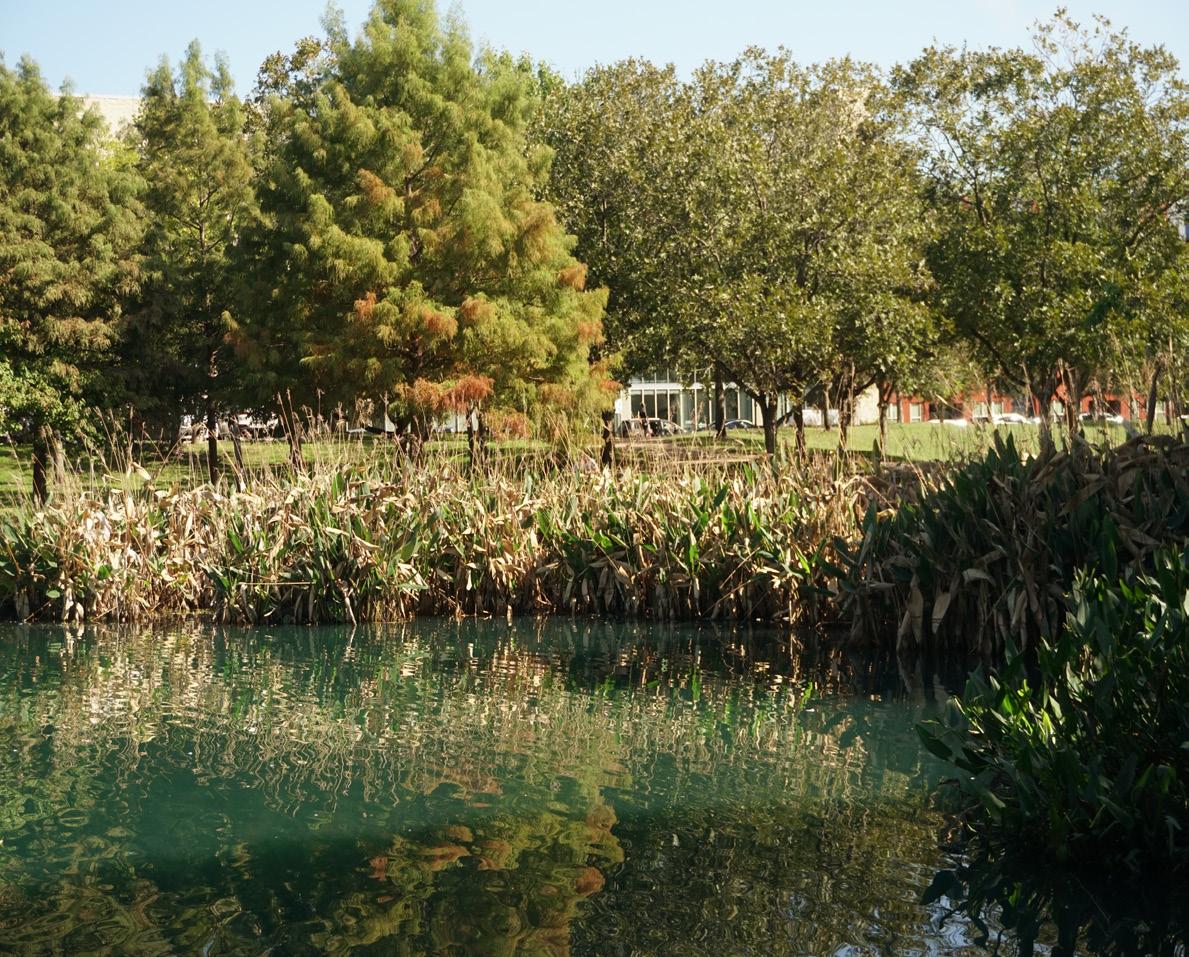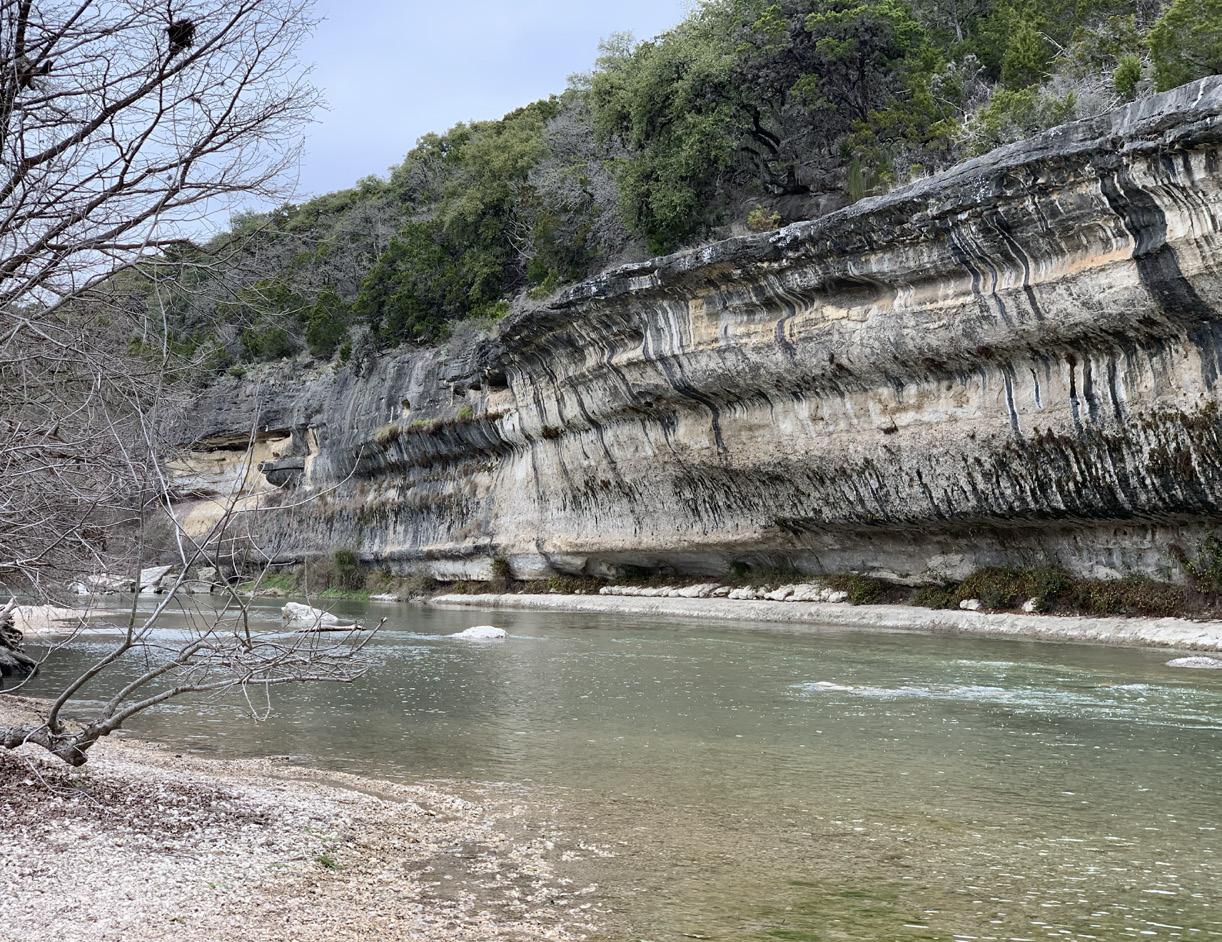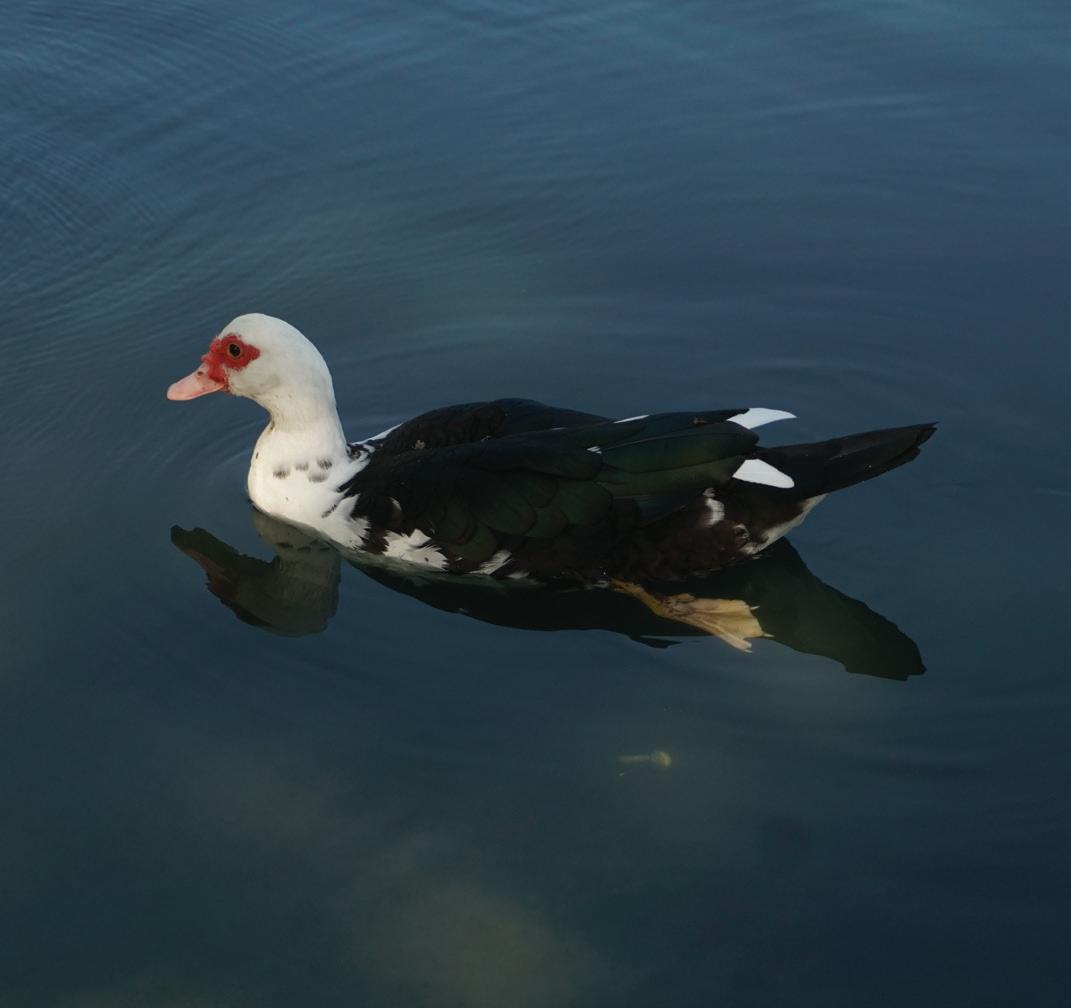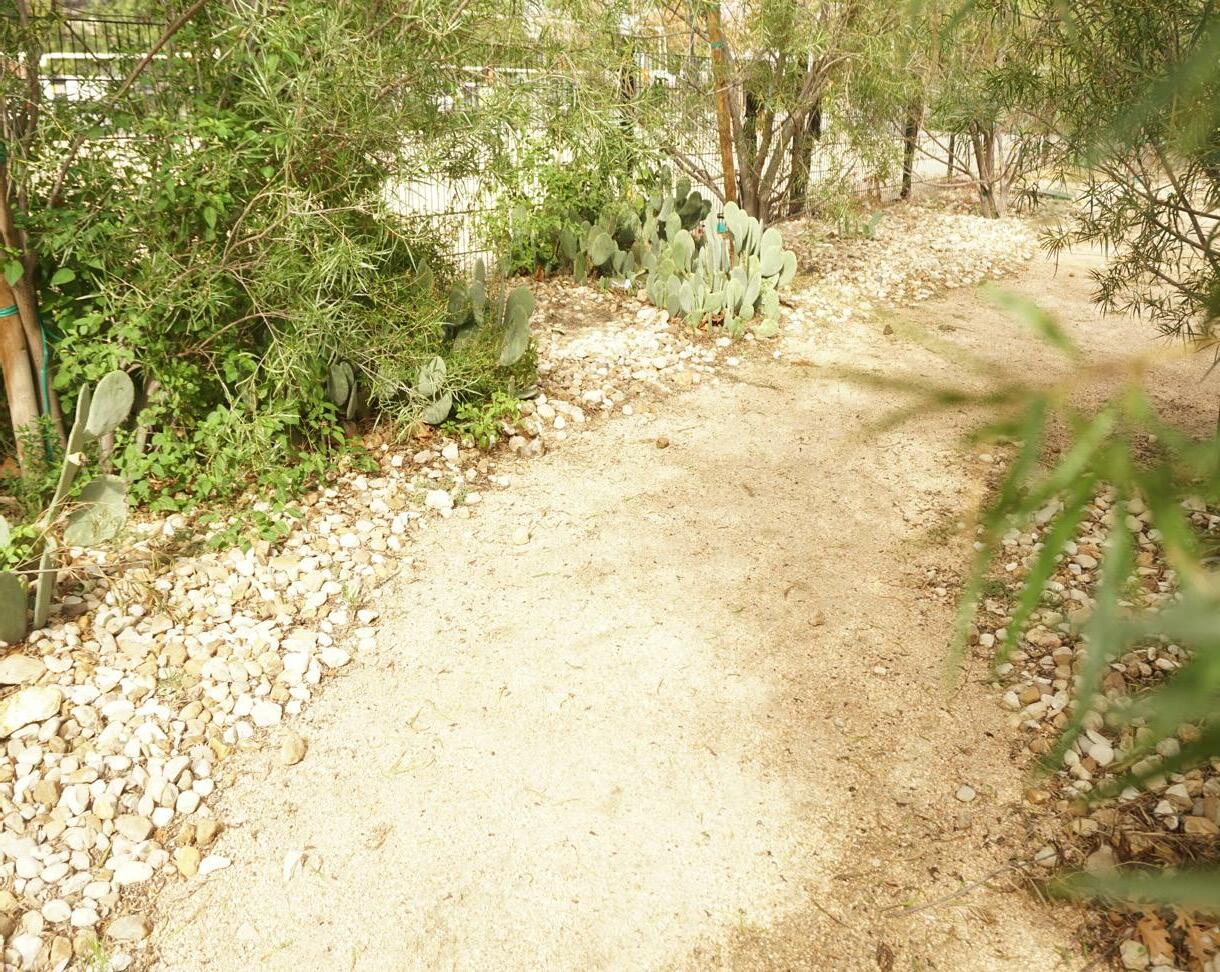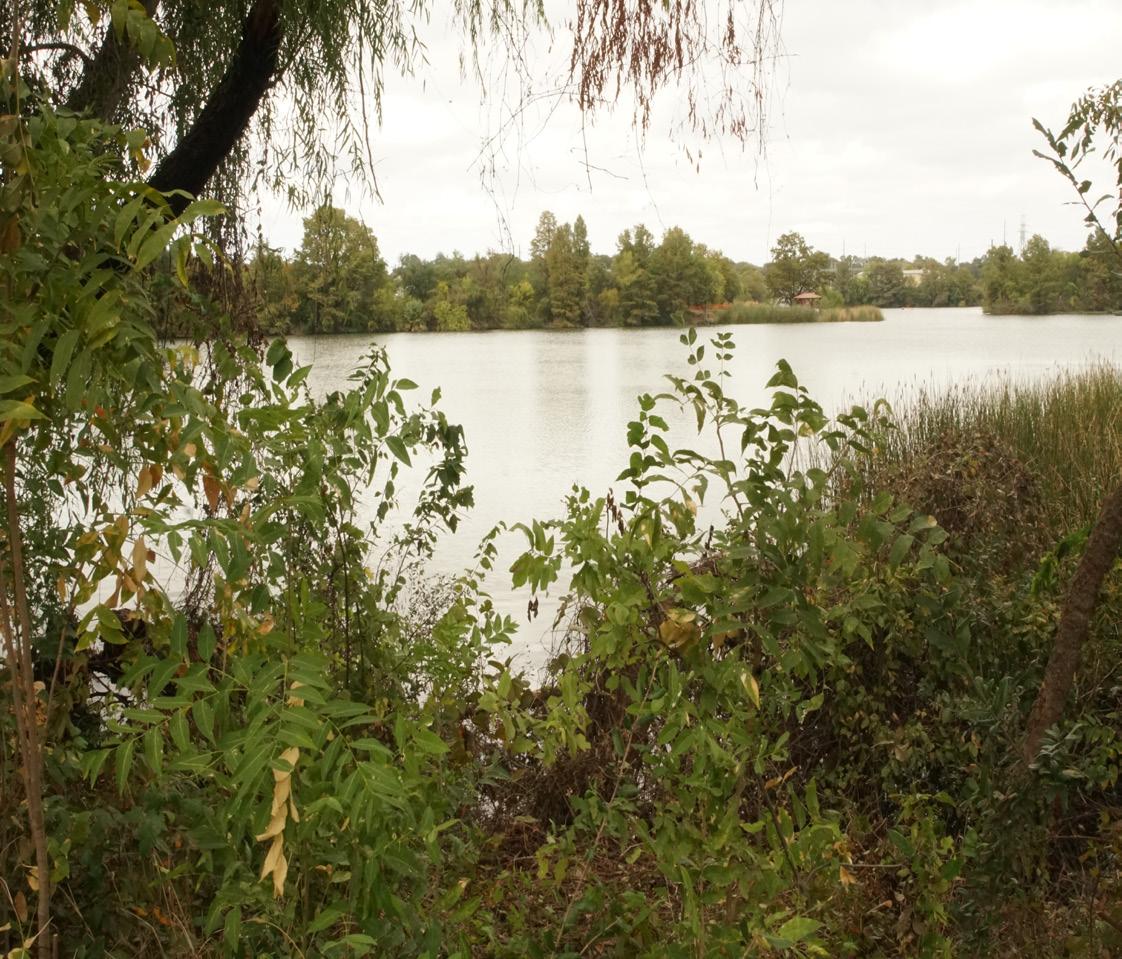
























Dear Reader,
Welcome to Austin’s Roots! We are a brand-new nature magazine from Central Texas. Our mission is to educate the Austin community and foster appreciation for Austin’s unique landscapes and wildlife. We hope that you will find our magazine enlightening and that it will allow you to view the environments around you with greater insight and understanding, as well as inspire you to further connect with the wildlife and ecosystems that are found throughout Central Texas and the rest of the world.
In this, our only issue, you will find a wide variety of stories and infographics. These range from a detailed breakdown of eco-friendly lawn alternatives to informative articles regarding the future of droughts and the protection of biodiversity in and around the Austin area. We will also cover the largest and most exciting state parks in Central Texas, as well as some of the best places to get fresh, local food and produce.
We started Austin’s Roots in August of this year (2022) after entering ninth grade at the Liberal Arts and Science Academy. Throughout our Electronic Magazine class, we learned a large variety of skills, such as how to use Adobe programs like Photoshop, InDesign, and Illustrator, all of which culminated in our final product this magazine. While we did have some challenges, including meeting time constraints and finding sources for research, we also had a lot of fun. We enjoyed trying out new programs we hadn’t used before, learning how to create graphics, and working with new people. Though it took the better part of a semester, we thoroughly enjoyed creating this magazine and hope that you will enjoy reading it.
Sincerely,

Amelia McRoberts (she/her) is a mountain biking enthusiast and freshman at LASA. Born and raised in Austin, she lives with five chickens, two dogs, and a cat. She likes backpacking, reading, and ultimate frisbee. After high school, she hopes to study environmental or aerospace engineering at Cambridge or Cornell. These career paths combine her love of building things and of the outdoors together. After college she wants to move out of the U.S. and go somewhere in Europe or New Zealand. In this magazine, she wants to write about outdoor recreation, like hiking and state parks, as well as how recent droughts are affecting these places.
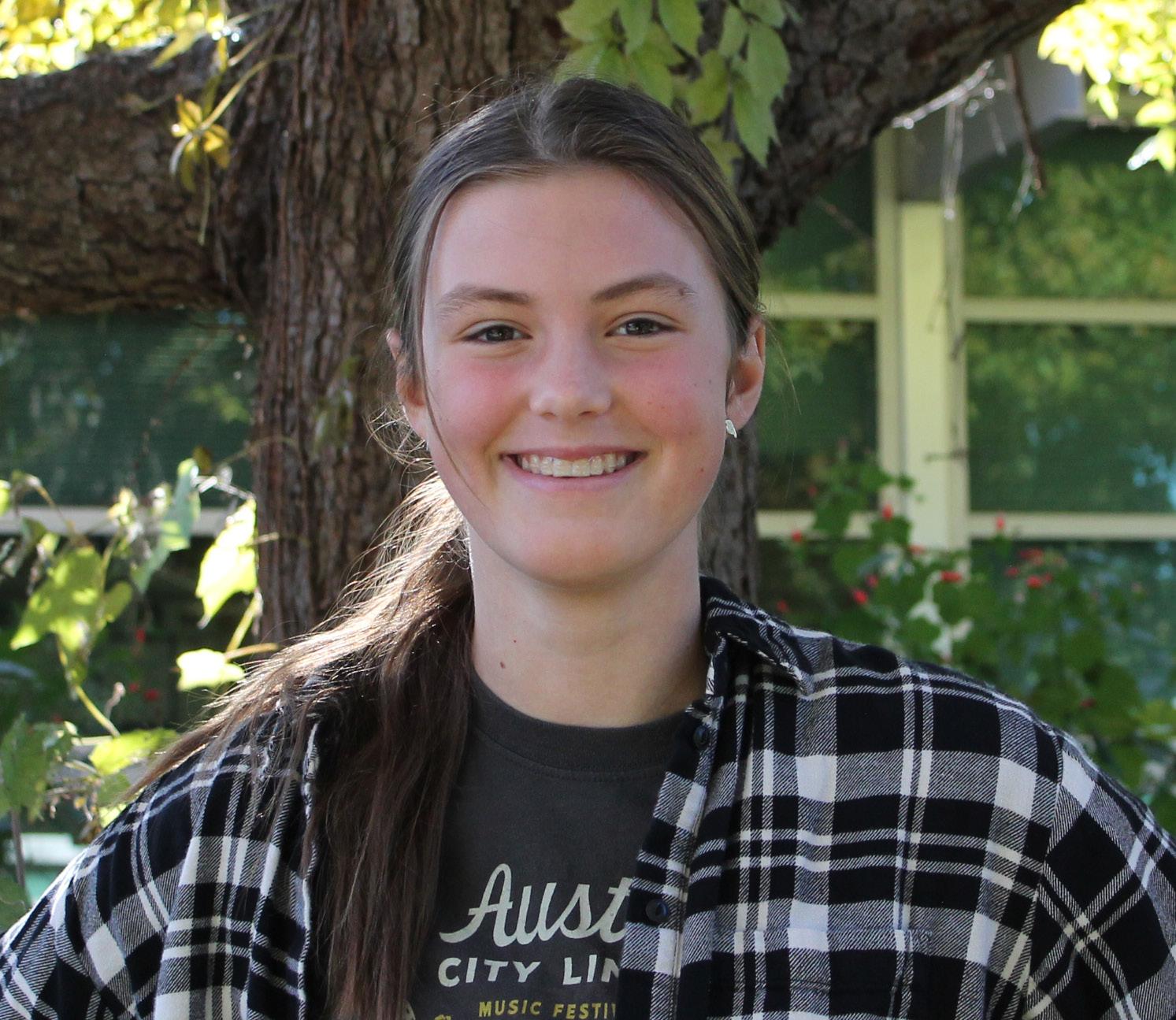
Boone Lynch (he/him) is excited to write about local, healthy, and sustainable food in Austin. He enjoys playing video games, building model vehicles, and working on cars. He says he’ll probably major in mechanical engineering after he graduates from LASA, but doesn’t have any specific universities he’s looking at. He has dyslexia and dysgraphia, which he says can make it harder to learn, but he still enjoys school nonetheless. He also enjoys art, and spends a lot of his time drawing and creating graphics. He doesn’t have any plans to travel internationally, but hopes to one day return to Virginia, where he was born.

Claire Zhou (she/her) is a 14 year old freshman at Lasa with a passion for tennis and shopping for furniture. She lives in Austin with her two dogs, Leia and Jack, and enjoys crocheting bags in her free time. After high school she is looking forward to majoring in architecture, although she doesn’t yet know where she wants to go to college. She does know she wants to go to the east coast for college, though, because the west coast is “ew, except for Oregon”. For her part of the magazine she is excited to talk about nature and design aesthetically pleasing pages, while well as teaching people to be eco-friendly at the same time.

Wintyr Rice (he/they) enjoys learning about nature, mythology, and writing. They are currently in their freshman year at LASA. They hope to write stories about Austin’s native bird species and why biodiversity in Central Texas matters. After high school, they want to travel, and hope to go to New Zealand, Germany, or the U.K. for university. As for career paths, they want to either become a zoologist or an archeologist. They enjoy writing fantasy stories with intricate characters, making D&D characters, and sewing.


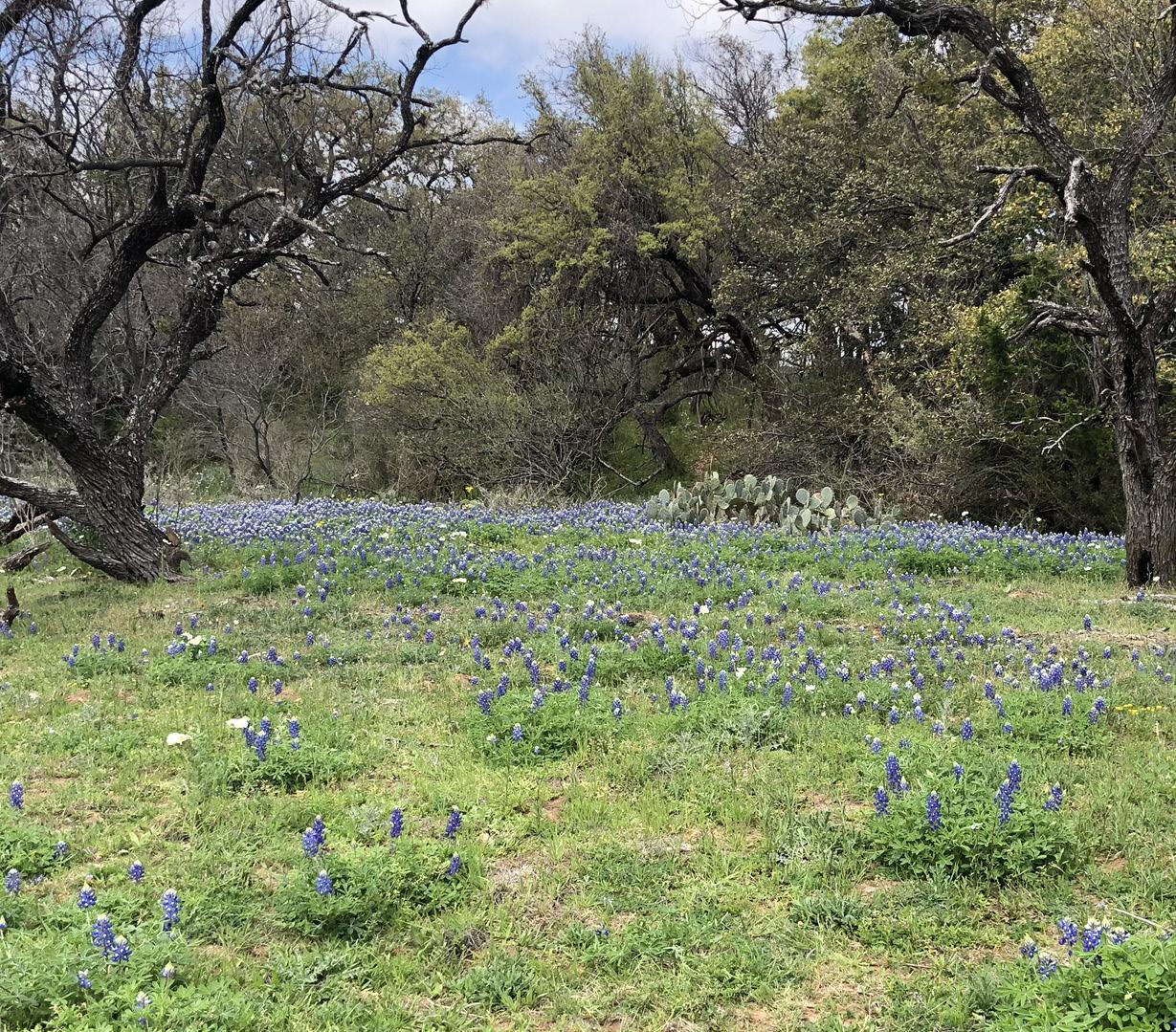
A field of bluebonnets in Austin, Texas. Bluebonnets are the Texas state flower and bloom in early spring. Photo by Wintyr Rice.


Austin is a city that is home to over 300 parks, according to austintexas.gov’s Park Directory, but despite this, the city’s biodiversity is declining. This decline is, in part, due to Austin’s rapid expansion. According to the Human Research Institute, it is the second fastest growing city in the U.S.. This growth leads to large-scale urbanization—or the development of rural areas—which poses a large problem for biodiversity, according to Leslie Uppinghouse, a horticulturist for the Lady Bird Johnson Wildflower Center—a botanical garden in Austin that works to educate people about the native plants of Texas.
“Biodiversity, by its definition, is said. “So the fragmentation of the land separates those plants and animals. And so if you think of a highway cutting through a field, the left side and the right side is separated, right. So there’s a loss of that community.”

Kelly Simon works with the Wildlife Diversity Program at Texas Parks and Wildlife Department. She mentioned a further reason as to why urbanization can be harmful for plants and wildlife. “Urbanized areas tend to have lower biodiversity,” Simon said, “because we have a tendency to take out native plants and put in
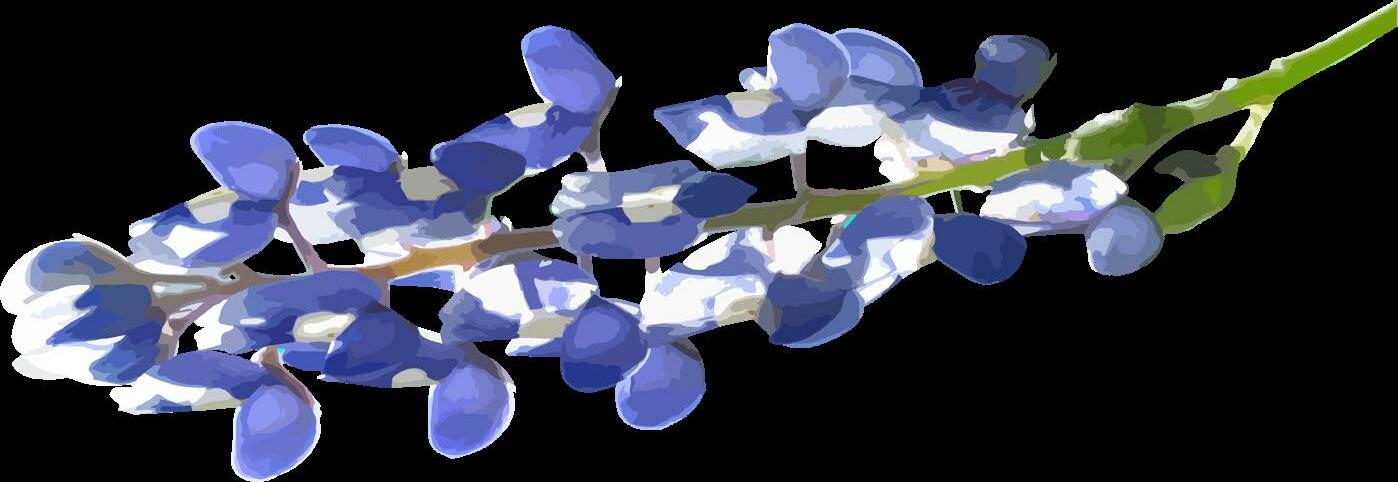
“We take it for granted that everything is going to be around forever”-Paul Fushille, Biologist
exotic plants.”
A common type of urbanization is suburbanization, where rural land is replaced with large developments of suburbs. According to Uppinghouse, these developments are a large part of the problem when it comes to urbanization and biodiversity.
“When a whole subdivision goes in, they’re removing all of the trees, and shrubs,” Uppinghouse said, “and they’re just putting in houses and lawns, and a few scattered trees. Typically those trees would be of one or two species, rather than the myriad of species that would be naturally in that area, you have that loss of biodiversity.”
Paul Fushille is a biologist at the Balcones Canyonlands preserve, a 33,000 acre land preserve in Central Texas. He said that a lot of children nowadays aren’t taught
how much of how the loss of biodi-
the chemicals we use, a lot of them were extracted or were gained from plants or animals or fungus,’ Fushille said, “The cure to some kind of cancer might be in some unknown flower that has yet to be discovered, or a chemical that hasn’t been extracted yet. So in all effects, it all boils down. Luckily, we don’t live in a science fiction world where all of a sudden, the entire world is devoid of life, and we take it for granted that everything’s going to be around forever.”
Because of this rapid urbanization, people are losing their connection with nature, according to Simon. She says that this is part of the reason why many people don’t care about policies and organizations that affect it.
“People really crave nature,” Simon said. “They generally enjoy being around nature, but a lot of times in our hectic day to day lives and urbanized areas, we move away from it. And we kind of forget that
connection. And so without that connection, we don’t invest in good habitat help.”
Fushille also mentioned how most people inherently want to be near nature. However, we often don’t have a lot of opportunities to be around the natural world in our day to day lives.”
“We live in a big city, you get deprived of being able to see nature and wildlife,” Fushille said. “And a lot of people say, well, that’s why people want to live out in the country, because you just feel better. The air is cleaner. There’s more plants and animals. So it affects us emotionally, physically. We’re the pinnacle of the world, we’re the dominant keystone species, we affect the entire planet, and we sometimes forget everything below us.”
Uppinghouse expanded on some of the effects nature has on people. She said that being around nature can measurably affect people’s health.
“[Nature] helps with your blood pressure,” Uppinghouse said. “It helps lower anxiety. There’s some studies on the chemicals that plants are releasing that can help with your cellular composition and reducing tumors and bacterial infections and viruses. So there’s actual physical things that being at a place like the wildflower center can give you.”
This increased disconnect is also affecting children, according to Dave Williams. Williams is the director and cofounder of Crowe’s Nest Farm, an educational nonprofit that takes care of domestic animals, and wildlife that cannot be released back into their natural habitat.
 Photos by Wintyr Rice
A visitor pets a goat at Crowe’s Nest Farm. The farm helps school children learn about animals and the world around them.
Photos by Wintyr Rice
A visitor pets a goat at Crowe’s Nest Farm. The farm helps school children learn about animals and the world around them.
“Kids who are exposed to the value of all living things, they just inherently become better human beings because they know how to care for something.” Williams said. “They understand what the value of life means.”
When people aren’t connecting to nature, it’s common for them to unintentionally do things that may hurt the biodiversity of an area, according to Fushille. A common example is people letting their house cats outside where they hunt local wildlife, sometimes to the point of extinction, and this isn’t the only example. “People drive down the highway, and they’ll eat their apple,” Fushille said. “Your apple core gets thrown out the window, that core lands on the side of the road. What happens is you start getting mice and rats and rodents near road sites. Well, what eats mice? Well, raptors eat mice. So hawks fly down, and then you start getting car and hawk collisions… And sure, your one apple core is not going to kill hundreds of birds. But that’s just one added thing that’s not supposed to be there that you thought was fine, because you think it’s biodegradable.”
This sentiment was echoed by Uppinghouse. She said that people will often try to do something
good, but unknowingly be harming an area’s biodiversity.
“There’s people all the time that think that they’re planting a beautiful garden, but they’re actually planting a whole bunch of invasive species that they don’t know,” Uppinghouse said. “They’re just planting something pretty that is being sold at Home Depot and we need to do a better job of making sure that the plants that are harming the environment aren’t being sold at Home Depot.”
According to Uppinghouse, this issue can easily be fixed. The spaces that may have once been filled with invasive plants can easily be filled with less harmful species.
“If you have a yard that just has a lawn,” Uppinghouse said. “That’s a single species. So that’s not biodi versity, that’s one species—a mono culture. You can plant one other plant with that grass, and you’re building biodiversity. If you stop spraying some pesticide because you don’t want fire ants on your lawn, and you plant that one flower, and a bee lands on that flower. You’ve expanded your biodiversity threefold.”
Simon encourages people to think about what organisms are already
in the area. She said that it’s a lot better than typical single-species lawns.
“If you landscape with wildlife in mind,” Simon said. “You can have a whole variety of beautiful birds and amphibians and insects and all kinds of things that really make

Koi Fish swim around in their pond at the Austin Botanical Gardens. The gardens showcase many plant species that can be found around Austin.
 A duck stands on a rock on the shore of Mueller Lake Park. The lake is manmade and is home to numerous species of ducks and other wildlife.
A duck stands on a rock on the shore of Mueller Lake Park. The lake is manmade and is home to numerous species of ducks and other wildlife.
it a vibrant habitat, rather than just a dead landscape.”
While a small area of biodiversity is great, large sections of land are much better for preventing habitat fragmentation, according to Fushille. However, this is an unreachable goal for many, and any sized area of biodiversity can still be immensely helpful, he said.

“If an entire neighborhood each set aside a part of their yard,” Fushille said. “You can make these little mini habitats. And, yeah, it’s not ideal. It’s not preserving thousands of acres of untouched land. But it’s a good start.”
There are many educational organizations in Austin, such as Crowe’s Nest Farm, and the Lady Bird Johnson Wildflower Center. There are also some places that don’t focus entirely on teaching, but still make sure it’s included in their efforts, such as Texas Parks and Wildlife. “We are partnering with different people to try to provide information,” Simon said. “Basically, it’s just information on how you can manage your land for wildlife
An American Coot swims around Mueller Lake Park. This species can grow up to a foot and a half long, and this one is nearly full grown.

pollinators or birds or mammals or whatever it is that you want to manage, we give you that information for free.”
The Lady Bird Johnson Wildflower Center has many educational programs and events, such as their guided garden tours and monarch butterfly migration exhibitions. Educating the younger generation is an important way to combat people’s lack of connection with nature, according to Uppinghouse.
“If a young child is coming, and they come twice a week or twice a month or even once a year and there’s a place they can run around, have a good time and smell the good smells and and really enjoy the clean air and and enjoy seeing butterflies and birds, they’re going to care about it,” Uppinghouse said.
“They’re going to care and they’re not going to have this sort of nature vacancy of not wanting to protect
that.”
Crowe’s Nest Farm also helps educate kids, and the majority of the people who come to the farm are students on field trips. Williams said that it is incredibly important to have these kids learn about the world around them.
“We get these kids, especially inner city kids, they only get one field trip a year and they usually choose us to come, because they get the biggest bang for their buck,” Williams said. “When I see them on that hayride wagon, or I see them milking the cow, [they’ve] got these big smiles on their faces. That’s what it’s all about to me. Because they’re having, for the two or three hours that they’re here, they’re having the best time possible.”
According to Williams, there are many challenges that come with running a farm like Crowe’s Nest Farm. This means that a lot of people don’t look at it, or places similar to it, as possible careers.
“I think the number one problem is because it takes a lot of effort and a lot of resources, financial resources,” Williams said. “I think
A squirrel looks at a visitor to Lady Bird Lake. The lake is connected to the Colorado River near downtown Austinone of the most under-appreciated groups of people in this country are wildlife rehabilitators. Because it is a very difficult thing. Because you’re dealing with injured, crippled animals, and you’re trying to save them, and they use their own money to do this. There’s not any kind of government funding… they put down a lot of animals that could have been saved, if they would have homes. But there’s just not places that can take care of them.”
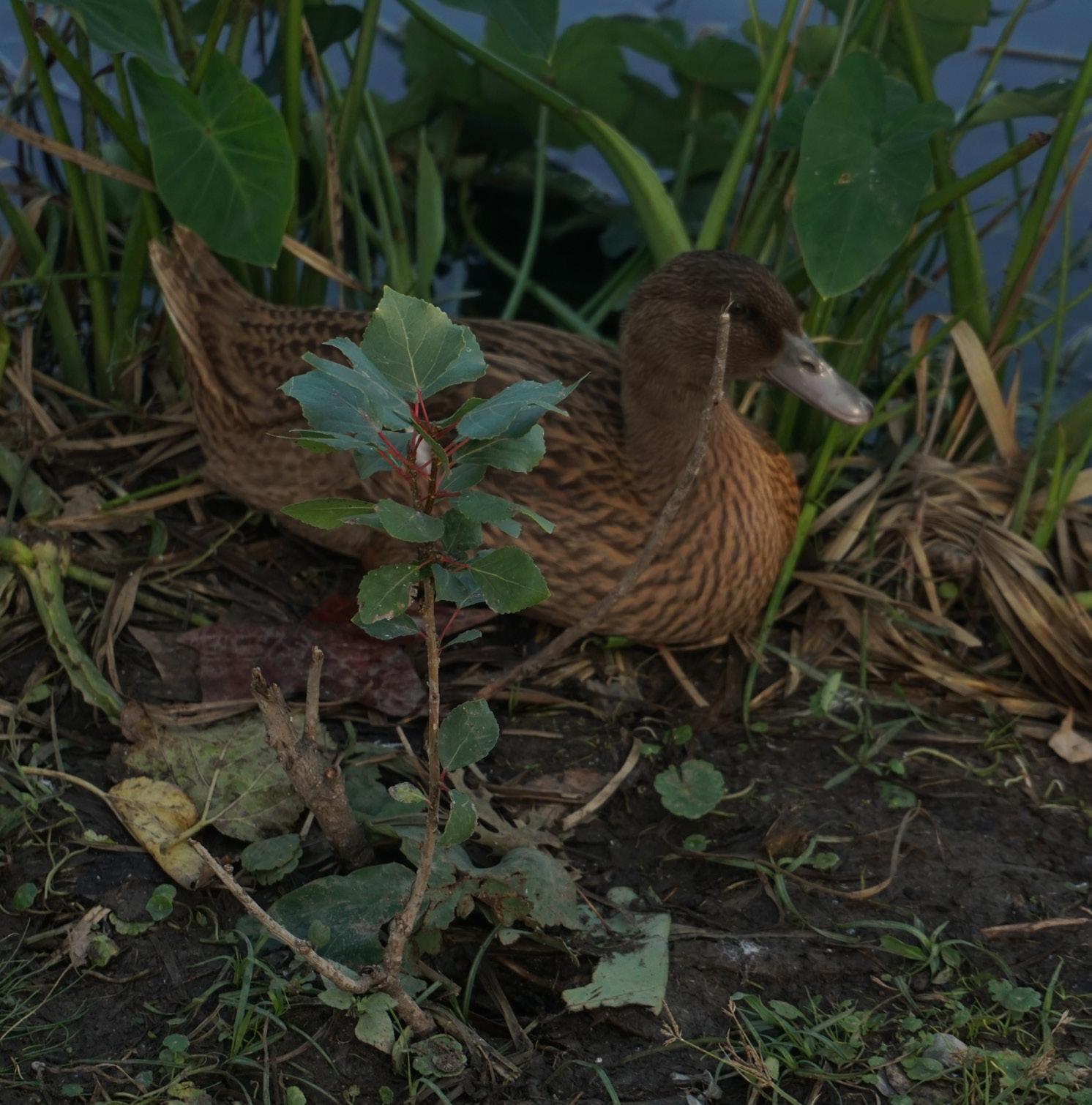
According to Simon, climate change is causing more events like the droughts that have occurred recently and the freeze that happened a couple of winters ago. These temperature extremes pose further challenges for farmers and wildlife rescuers, according to Williams.
“We lost water for a week,” Williams said. “We had no electricity for a week. So I have this big 100 gallon cube that goes in the back of my truck. And I had to go to a fire station that had water. And they let me fill that cube up every day. And I had to go around all the animals and break ice and give them water and give them feed. It took me eight hours just to feed all the animals on the farm. I lost two animals because of the freeze. I lost a longhorn, and I lost a goat, and a couple of chickens.”
The freeze also affected animals
outside of nonprofits and rescues. Extreme temperatures are often dangerous, if not deadly for many wildlife, according to Simon.
“That affected a lot of wildlife that were living in urbanized areas and in the countryside,” Simon said. “So bats, for example. We had a big die-off of the bats that were overwintering in our area.”
Freezes aren’t the only weather patterns that can severely affect
is a little bit of northern migration, unfortunately, then we get those big cold snaps, and it disrupts their ability to survive, and it makes it very difficult for them to survive… Things that are well adapted to drought are doing pretty well, but things that are not well adapted to drought are having to move farther north or along the coast or in different areas.”
The majority of shifts in an organism’s range don’t happen over a year or two. It also doesn’t have to always be a large temperature change that causes that shift, according to Fushille.
“If climate changes just a bit, there could be certain plants that just can’t handle it,” Fushille said. “Is it going to happen in 20 years? Probably not. But in 50, 100 years, critical habitat for this specific species could be gone because of changes in the environment.”
biodiversity. Any large shift in temperature can be enough to kill off a plant or animal that isn’t adapted to it, according to Simon.
“The climate is warming in our area,” Simon said. “So we attract some species that normally occur a little bit farther south of here. There
According to Fushille, one species that may end up having to leave Central Texas are Texas Madrones. Madrones are a species of tree that mainly lives in West Texas, Central Mexico, and down to Nicaruagua. “Does it have a direct impact on you and me,” Fushille said. “If madrones get wiped out from the Austin area? Maybe not. But we’re lesser for it.”
Photos by Wintyr Rice A small duck takes a break after climbing out of the water at Mueller Lake Park.
he city of Austin is an ever-growing and expanding city with a community known for the arts, diverse cultures, and thriving economy. As development has continued due to increases in migration towards the city, the Austin area has lost much of the land and habitats that have previously been untouched. The preserves of Austin collaborate with other pre-
serves and parks in Central Texas, affecting the living conditions of communities of people and Austin as a whole.
According to the Center for Geospatial Analysis at William & Mary, urban areas in Austin have increased from 6% to 15% in a matter of 30 years, spanning approximately 25,965 square kilometers in the Austin area. The United States Census Bureau estimated the population of Austin was 569,000 in 1990. The current estimate for the 2021 population of Austin is 2,117,000. In the past decades, the city of Austin has experienced exponential growth in population, residential, and commercial development. According to the New York Times, Austin has emerged as a new hot spot for commercial real estate investment and a magnet for out-of-state corporate relocations that are strengthening its allure as a center of the high-tech industry. Companies like Tesla, Apple, and Amazon have moved into Austin, and Tesla moving their
 A silouetted man standing at the entrance of the Westcave cave. Photo courtesy of Westcave Discovery Center.
A silouetted man standing at the entrance of the Westcave cave. Photo courtesy of Westcave Discovery Center.
headquarters from Palo Alto, California, to Austin. According to the New York Times, across the nation, Covid-19 remains a threat and empty office buildings and restaurants have hampered growth, but Austin, the Texas capital, has emerged as a hot spot for commercial real estate investment and a magnet for out-ofstate corporate relocations that are strengthening its allure as a center of the high-tech industry.
The Balcones Canyonlands Preserve system, is a preserve that spans more than 32,000 acres and is made up of various smaller preserves in an effort to protect endangered or vulnerable species and provide habitats for native plants and animals. According to the official Austin website, the Balcones Canyonlands Preserve contributes to improved air and water quality, as well as improved quality of life for the people of the Austin area. They especially look out for two bird species, the Golden Cheeked Warbler and the Black-Capped Vireo. The Golden Cheeked Warbler is currently endangered and monitored, and the Black-Capped Vireo has recently been moved off of the endangered list due to collective conservation efforts. The Barton Creek Habitat Preserve, managed by Brandon Crawford, is a privately managed land preserve, and part of the Balcones Canyonlands Preserve. “Mitigation is when, if you destroy something,
need to replace something to minimize
the effect your expansion will have on the environment,” Crawford said.
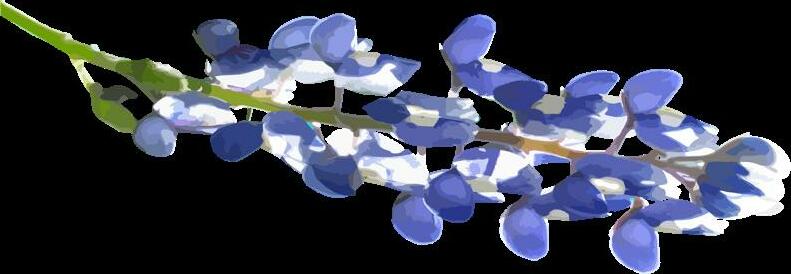
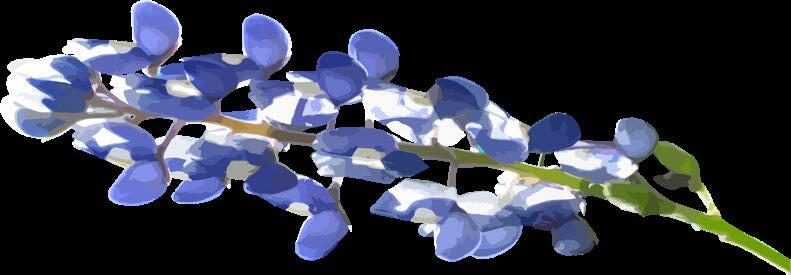
Mitigation efforts and policies have been put in place for expansion regulation and endangered species habitat conservation in Austin, explained Eric Paulus, Circle Acres. Paulus manages the Circles Acres Preserve, which was founded in 1969 by the Nature Conservancy, an organization that works towards zero waste and landfill division in Austin and its surrounding regions.
Across Texas, there are organizations and preserves that work towards protecting the Austin area and the land surrounding it. Many focus on preserving habitats for the wide variety of animals that reside in the Austin areas as well as the land that surrounds them. Austin roughly borders the Edwards Plateau, a geographical landform in central Texas that is also called the Texas Hill Country because of its stony, forested hills. However, protecting the land becomes
 Firefighters conducting a fire for the Westcave Discovery Center. Photo courtesy of Westcave Discovery Center.
Firefighters conducting a fire for the Westcave Discovery Center. Photo courtesy of Westcave Discovery Center.
you
“The biggest lesson is that you get to turn the most degraded land there is, into something, not only beneficial but really valuable for wildlife and for people.”
- Eric Paulus, Circle Acres preserve manager
challenging when wildlife is affected by pollution. According to KXAN, in 2021, the city of Austin noted seven sources of trash ending up in Austin creeks which range from illegal dumping and overflowing dumpsters to encampments and historic dumping. They stated that trash was most intense at locations of illegal dumping, and encampments were the most common source of trash. According to the Austin Monitor, the Parks and Recreation Department reports it has removed 187,000 pounds of trash from parklands so far this year, and an additional 440,000 pounds of trash has been removed from encampments since City Council approved an underpass cleanup contract in March of 2019. “I have a collection of baby doll heads that I find a lot from [illegal dumps],” Paulus said.
“The preserve was a former city of Austin landfill,” Paulus said. “And then an illegal dump. So I guess the biggest lesson is that you get to turn the most degraded land there is, into something, not only beneficial but
really valuable for wildlife and for people.”

Austin creates large amounts of trash that are dumped into landfills. The toxins from the trash have the possibility to seep into wells and aquifers and contaminate drinking water. Being able to turn the land from a landfill or overused land into an area that is usable is good for wildlife and the surrounding communities of people, according to Paulus. For example, a St. Edwards University research project had students look at water quality and how it varies at different points on a preserve.
The Wild Basin Wilderness Preserve is co-owned and co-managed by Travis County and St. Edward’s University, according to Barbara Dugelby, director and faculty associate at Wild Basin Wilderness Preserve, and is part of the Balcones Canyonland Preserve system. The preserve is a site for many research projects and observations made by St. Edwards University students and staff members, many of these research projects
“Students are involved in all of the research projects,”
Berry bushes at Mueller Lake Park. Photo by Winyr RiceDugelby said. “So in my wildlife camera project, I’ve had seven different students involved in that… Each year different students participate and ask different questions about the data. So one student was looking at how hiking intensity affected wildlife use of trails, another student was looking at where bobcat coyotes and foxes prefer to go in and out of the preserve. And where are those points different for different species, so all kinds of stuff. And then Darren, the research director, and all of his students have his research projects involving students. Then they have students also come and do their own research…We’ve had students doing insect research, and all kinds of different projects that the students do, and then this class has also come out here and done laboratory work. They’ll study or learn field methodology in the Wild Basin field setting.”
St Edward’s University conducts research projects
on the Wild Basin Preserve, collecting information from what is observed. The results from the tests can be applied to help us consider how to manage or treat the land in the future and our impact on wildlife and nature near large communities or roads. The results of the tests can influence many to realize the effect we have on the surrounding environments and how it can affect us in the long run. What many preserves do can directly affect the Austin population.
“Our research director is doing really interesting research on the impacts of sound, like highway noise, helicopters, lawnmowers, [and] the impacts of sound on wildlife, in particular on birds,” Dugelby said. “He’s got acoustic recorders all over the preserve, and he’s developing a soundscape of the preserve. You can observe how the noise level is really high next to the highway because highway 360 goes right by the preserve, and then it gets less [towards] the back of the preserve.”
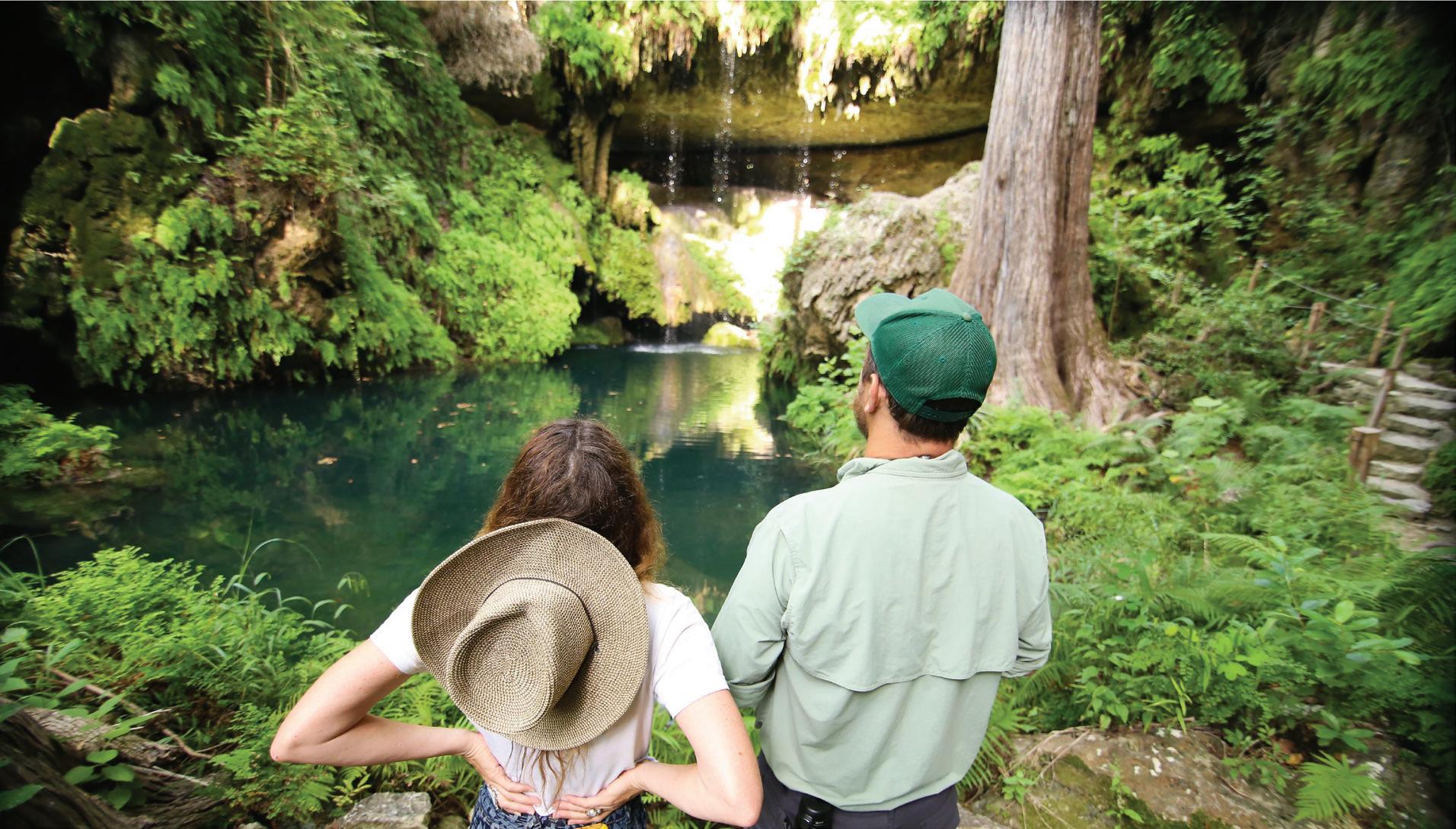 Couple admires the Westcave Grotto. The grotto is a main attraction at the Westcave Discovery Center. Photo Courtesy of Westcave Discovery Center.
Couple admires the Westcave Grotto. The grotto is a main attraction at the Westcave Discovery Center. Photo Courtesy of Westcave Discovery Center.
The average American household uses an 320 gallons of water per day. 30 percent of that water is for outdoor use, which often goes to watering lawns and gardens. In order to attain the dream of a perfectly trimmed, vibrant green lawn, many spray their lawns with pesticides that can end up in wells and water supplies. To prevent this, you can use more environmentally friendly alternatives to a usual grass lawn that use less water or fertilizer.
Creeping thyme is drought resistant, with no mowing or trimming needed It spreads quickly and chokes out weeds Creeping thyme is pollinator-friendly You can eat creeping thyme, and it also smells nicer than a traditional grass lawn
Creeping thyme is costly to install and can only hand light foot traffic Sensitive to cold, and may not make it through the winter, depending on location
Moderate to high sun exposure with well drained soil
Sweet woodruff is weed resistant with little mowing, watering, and trimming necessary It also spreads quickly and is a flowering alternative to grass
Sweet woodruff can become invasive depending on your location or how it is used
Sweet woodruff grows better with low sun exposure and in cooler areas. Sweet woodruff does best in well drained, moist soil
Creeping phlox is moderately drought resistant, and doesn’t need as much water There are many varieties of colors Pollinator-friendly
Doesn’t do too well with frequent foot traffic.
Creeping phlox bodes well with rich, well-drained soil. It also prefers full sun exposure. It can be great in a sunny area
Chamomile doesn’t need as much care like mowing or watering as other ground covers Its great for heavily landscaped areas, hills, and fields
Chamomile is beneficial for the soil because its high in the right nutrients
Chamomile is pollinator-friendly
Chamomile can only handle light to moderate foot traffic.
After its blooming season is over, the dead flowers might need trimming
Chamomile is great in moderate to high sun exposure
Make sure to plant it in light soil (sandy loam) and avoid dry and stony conditions for the best results
Moss is a good option for a ground cover if you want to avoid using fertilizers
Moss looks best when in shady areas and moist areas
Moss doesn’t require any mowing or much care at all and doesn’t grow very tall, making it a good ground cover over rocky terrain
Moss doesn’t attract pests since it’s too short for them to live in.
Moss is a great plant to put on rockier terrain where traditional turf or grass wouldn’t do as well. It can also make rocks stand out less.
Moss does require more frequent watering
It has poor sun and foot traffic tolerance, and can be easily damaged
Moss does best in the shade with frequent waterings. It prefers more humid places and can do very well if used in the right places
White clover and clovers in general can withstand heavy foot traffic When planted in small patches, it can be semi-drought resistent.
White clover requires less mowing and no fertilization.
White clover does good in well-drained, moist soil with full or partial sun exposure
White clover grows best in acidic soil
Long periods of heavy foot traffic can harm the clovers
In larger areas, the clovers can compete with eachother for water, and lose their drought resistance
White clover can become invasive
White clover attracts benficial insects and can be paired with grass while also decreasing weeds and erosion
White clover, like chamomile, provides good nutrients to soil
sources: gilmour.com, epa.gov, gardeningknowhow.com, and lawnlove.com
he sun beats down on the brown twisted branches of dying trees as dry leaves rustle in the whisper of wind. The once-busy hiking trail is empty as the hikers who used to traverse the winding paths have left for cooler suns and greener places. No birds tweet and all the animals have retreated to the scraps of shade found under rocks and holes in the ground. In the distance, the ground seems to waver
along a dry lake bed, once full of cool water, now full of nothing but mirages. A boat lies abandoned where it once drifted through the lake. As the water level receded the boat has been left beached and trapped, weeds curling up along the sides of the rails and rust cutting
through the hull.
For the past two years, a severe drought has swept Texas drying up major lakes, killing crops, and forcing businesses to close their doors. Although droughts are common in the southwest, this one is particularly devastating. “About 27% of the state is under an “exceptional drought,” the worst category, with about 62% under an “extreme drought,” the second-highest classification. Weather reporters through KXAN say that it will take anywhere from 10-20 inches of rain to recover.
One of the biggest impacts this drought has had on Texas is the stunting of recreational activity, with many people wanting to remain out of the heat. Nyta Brown, the Director of Old Tunnel State Park has noticed a decrease in visitors to the park over the summer.
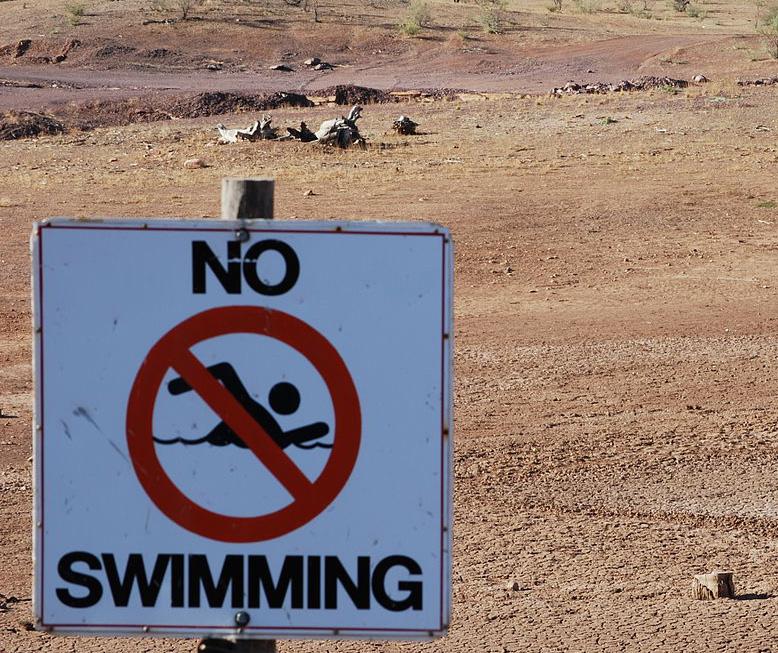
“Nobody wants to be out hiking a trail in 102-degree weather,” she said, “and

 This former lake is now completely dried up leaving no traces of water.
Photo courtesy of Peripitus
This former lake is now completely dried up leaving no traces of water.
Photo courtesy of Peripitus
The impact drought has on outdoor culture in and around Austin.
when there’s no rain, there’s no vegetation, there’s nothing green to look at… you get out and everything’s dry and dead. I think that also deters people from wanting to get outside and enjoy nature when nature doesn’t look so good when it’s hot and dry.”
Visitors aren’t the only numbers that have decreased though. Old Tunnel, located in Kendall County near Fredricksburg is home to 3 million Mexican Free-Tailed bats from May through October. Brown has monitored the bat population and compared it to numbers from 2011, another severe drought year. “[The bats] were struggling to find food and water sources,” Brown said. “It will be interesting to see if the bats leave early to migrate back to Mexico (That’s what happened in 2011A lot of the pups that are born in drought years, don’t survive…If we don’t get more water and more rain and there’s not enough food, the bats won’t either.” Surprisingly, Ms. Brown explained, the bat emergence has not affected the visitors as much as the heat, “We do get repeat visitors, but a lot of our visitation is from tourists coming to Fredericksburg… They’ve never seen a bad emergence,

they have no idea that usually we have about a million [bats] at the beginning of the season, and then we build up to about 3 million bats… That didn’t happen this year… we only had, for a lot of our season, only about 300,000 to 500,000 bats.”
We are seeing this kind of ac-
tivity in animals throughout Texas. The unusual migration patterns and lack of resources will have a big effect on population numbers.
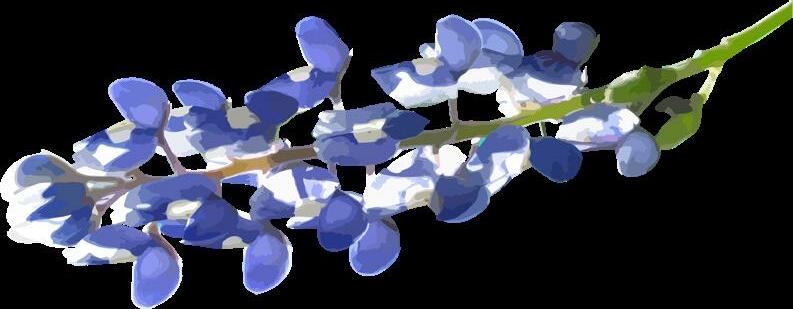
Matthew Fougerat, the Texas Parks and Wildlife Department grant coordinator says “Hunting will be impacted, Fishing will be impacted because a lot of the rivers are having spots where they’re drying up, which means there will be fish killed which definitely impacts recreational fishing,”
In turn, this decrease in animal population and activity has many people choosing to go boating
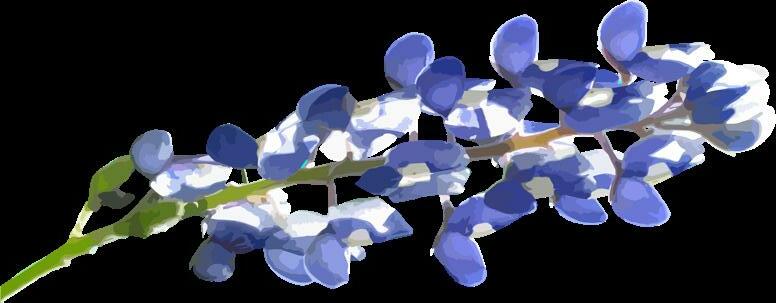 Old Tunnel State Park is home to around 3 million mexican free tailed bats and 3,000 cave myotis bats May through October.
Photo courstesy of Nyta Brown
Old Tunnel State Park is home to around 3 million mexican free tailed bats and 3,000 cave myotis bats May through October.
Photo courstesy of Nyta Brown
“About 27% of the state is under an ‘exceptional drought,’ the worst category - KXAN
and swimming instead of hiking or adventuring in parks such as Old Tunnel. Instead, people are turning away from the heat and heading to the lakes.
“When there is a drought, usually it’s related to excessive heat. The
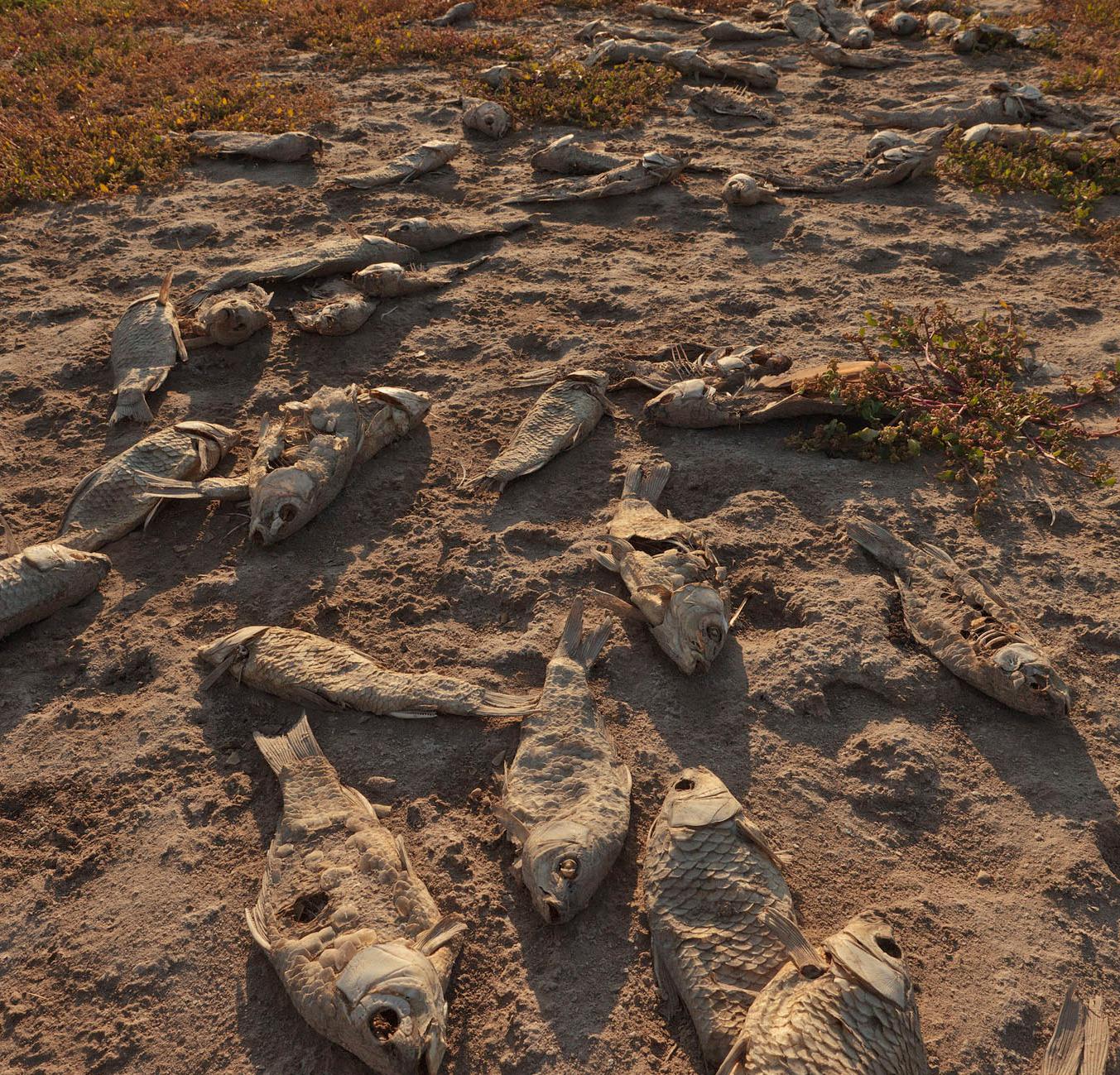
you may not be able to get a boat in the water in certain areas. So that puts more pressure on other lakes that still have water like Inks Lake and Inks Lake State Park. That is a stable level, so they basically keep that lake level.” said Mr. Fougerat.
personal watercraft,” Fougerat said. “Like non-motorized personal watercraft which don’t require the same type of infrastructure. So we’re talking canoes, kayaks, standup paddleboards, there’s a big trend for outdoor recreation to move in ple to that type of water recreation,” through grant requests for docks to in the future. It doesn’t make sense boat ramp adaptive to conditions?”
Lake O.C. Fisher in San Angelo State Park has almost completely dried up, leaving behind dozens of fish corpses. Photo courtesy of Earl Nottinghamdrought, will it still make the water accessible? We make that determination during the scoring process and try to make the state of Texas more adaptive.”
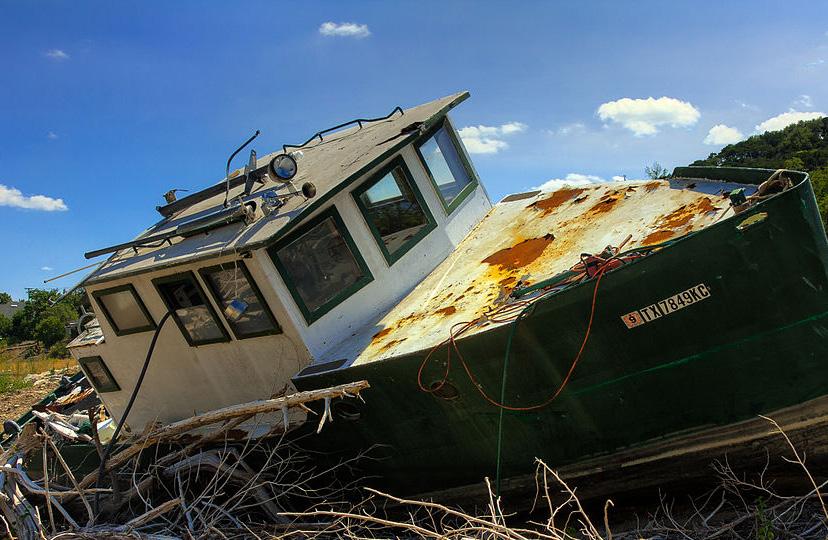
Austin’s government is also making strides in conserving water usage to prevent these sharp drops in water levels.


“There’s the Inflation Reduction Act,” Auckland said “Funds going through that will be allocated to the state and those funds will then support greenhouse gas inventory, training for jobs--specifically in the thermal industry. There are a lot of funds to encourage local governments to save and conserve water and energy. They also have funds for making sure that water treatmentfacilities create innovative ways where you don’t have to use as much water or also implement small changes and best practices so you can prevent leaks in the system. Most watersystems for water treatment facilities on average, leak 15%.
So what these facilities are having to do is process more water than what they need because they know
droughts, it’s to minimize the effect of droughts. According to the Red Cross, in order to try to help save water you can water your lawn only on approved days, install rain barrels, check your pipes for leaks, don’t let the water run when brushing your teeth, take shorter showers, and last but not least you can invest in more sustainable watercraft like canoes, paddleboards, and kayaks instead of motorized boats.
that they’ll have a loss of around 15%.”
Right now, the goal isn’t to prevent
“Most water systems for water treatment facilities on average, leak 15%.”
- Shaun AucklandAs Lake Travis has dried up many boats like this one have been left beached on the shore and then abandoned. Photo courtesy of Erik A. Ellison
Texas is filled with stunning state parks and wildlife preserves, yet many people feel lost when they are trying to plan a trip to one of these areas. Fear not! I have compiled a collection of the top 5 state parks in Texas, as well as some of the amazing things you can do while there.
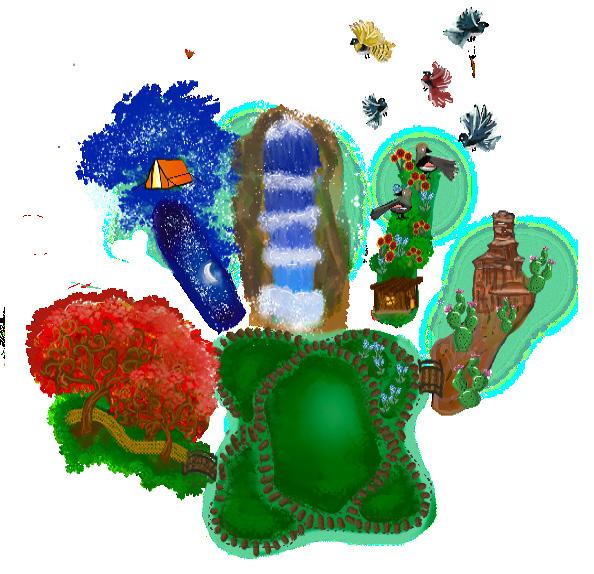 Art by Amelia McRoberts
Art by Amelia McRoberts
Description : Lost Maples is a 2,906 square mile natural area along the upper Sabinal River. It is know for its Uvalde Bigtooth maple trees wich turn firey reds, oragnes, and yellow in the fall.
Activities : Lost Maples is a great place for hiking, camping, fishing, birdwatching, stargazing and geocaching.
Fun Fact : This park is home to the ONLY maple forest in Texas!
Description : Big Bend state park is a rugged remote Ranch State Park featuring steep rocky canyons, large, rugged mountains, and a stunning night sky.
Activities : Big Bend State Park is known for backpacking, mountain biking, and incredible stargazing.
Fun Fact : Big Bend Ranch State Park is Texas’s largest State Park with 300,000 acres of land!
Description : Pedernales falls is home to a gorgeous waterfall that drops 50 feet in elevation over a distance of 3000 feet.
Activities : At the river you can swim, tube, and fish, as well as hike up to the falls and go horseback riding.
Fun Fact : The limestone that this park sits over is more than 300 million years old!
Description : This 2,600 acre park has miles of rocky trails, and runs along the south Llano river, which is filled with native fish.
Activities : South Llano park is known for incredible bird watching and fly fishing, but it also primitive backpacking campsites, swimming, and mountain biking.
Fun Fact : South Llano is the oldest and most substantial turkey roost in Texas!
Description : Palo Duro Canyon is the second largest canyon in the U.S. The canyon is about 120 miles long and 20 miles wide, and is around 800 feet deep.
Activities : At Palo Duro Canyone you can hike, backpack, bike, camp, and even ride horses.
Fun Fact : People have lived in Palo Duro Canyon for over 12,000 years!

 By Boone Lynch
By Boone Lynch
This bird kite helps to keep smaller birds from eating farmers’ crops. Some farmers may decide to use real birds, although that option is more costly than the kite.
eople gather around and chatter about their newest purchases, while vendors call out to advertise everything from plants to duck eggs to handmade crafts. Dogs wag their tails and greet each other as their owners walk around to different shops. These are but a few of the sights that can be found in Austin’s farmers markets. These events provide a space for local farmers to sell their produce. Other farms have their own markets, such as Boggy Creek Farm-which is just over a mile north of Lady Bird Lake. Tracy Geyer, administrative assistant and co-owner of this farm, explained why the farm called to her.
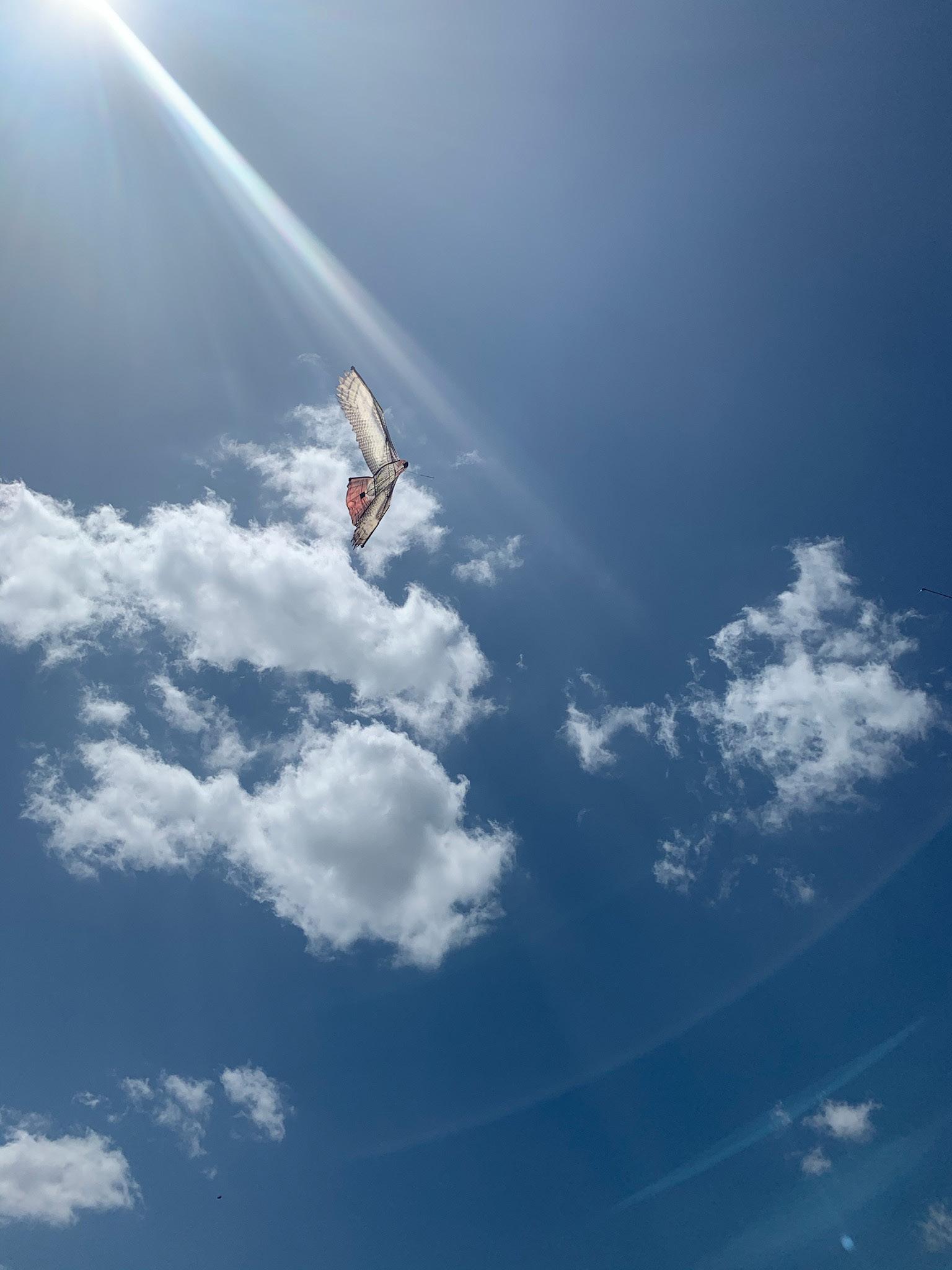
Geyer said “Farming is hard, gratifying work better than any office job.”
The many wonders, such as the smell of a morning breeze and opportunity to be around nature all day, are a big reason she farms.
Geyer said she “I enjoy working with soil.”
She has noticed that people enjoy their food more when they know where it came from, and that it was farmed with care, it makes them feel more secure about their choices because you know you are eating safe and healthy food.
“This provides connection to the community.”
They do this by creating an enjoyable place to experience first hand what goes into the making of the food you eat.
Geyer specified that Boggy Creek Farm doesn’t go out of their way to get more business or use obnoxious advertisements, and instead just let people find their farm naturally by word of mouth. This means that most of their customers are people who really understand the importance of a local farm, and want to find others in that same community. But sometimes things outside of their control can stop that community from coming together.
In late 2020, Covid-19 hit, and the world went into a lockdown, which, according to the United States Census Bureau, negatively affected businesses, but to Boggy Creek Farm, the pandemic was actually beneficial. According to the New York Times, during the Covid-19 pandemic, most people didn’t want to go inside large retail stores due to health concerns, and hundreds of stores even closed down perma-
courtesy of Wendy Reslewic
nently or transferred to online shops. Instead, consumers went to open air markets, such as Boggy Creek Farm or farmers markets, which are entirely outdoors, and therefore posed less of a health risk than typical stores.
Farming is a constant struggle against weather and pests.
Boggy Creek Farm believes “persistence and patience are a good attribute to have when farming.” These are important to keep the motivation to continue farming Snow storms and freezing temperatures are a big issue for agricultural businesses, because they weaken
plants and slow down their ability to fight infections and make food. The winter storm in February of 2021 was no exception. The crop yield for the year was far less than expected. Another constant threat is bugs, such as aphids, which inject a special toxin into the plants, rotting the leaves.
Geyer said they “perform surgery on a plant to eradicate the bugs.” often digging the bugs out of the stems.
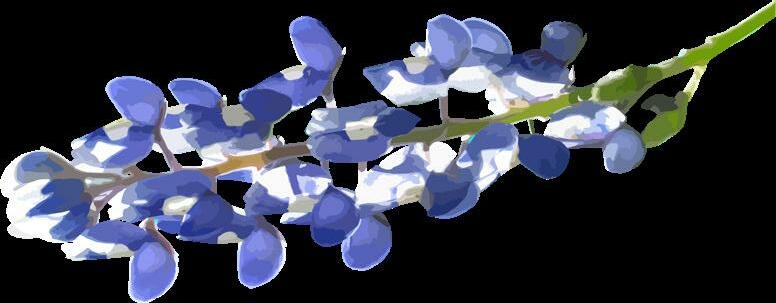

Wendy Reslewic, past owner of Flite Acres Vineyard, realized she could excel in grape growing when she visited a vineyard and wanted to improve an experi-
 Wendy Reslewic (far left) and her son Sawyer(far right) with friends at Flite Acres, a vineyard in Central Texas.
Photos
Wendy Reslewic (far left) and her son Sawyer(far right) with friends at Flite Acres, a vineyard in Central Texas.
Photos
ment with growing grapes. Reslewic was inexperienced in farming grapes when she first started at Flyte Acres, and visited Texas A&M Agrilife Extension and the Texas Wine and Grape Growers Association, who taught Reslewic everything she would need to know about farming and grape growing. In 2016, she bought 40 acres in Wimberley, Texas, where she lived and grew grapes on a 3 acre vineyard.
Reslewic gave specifics into the growing of grapes. She said that the growing period for grapes lasts three years, meaning that vineyards have to plant lots of grapes to make up for the long time between harvests.
Even when the grapes are in the early stages of growth, vine health is vital to the growth of a grape plant. Animals, such as deer and birds, will commonly eat the grapes, so vineyards implement

large nets to deter them from eating the crops.
One little insect did more damage than the deer and birds combined.
Grasshoppers took out a massive chunk of the vineyard vines which greatly affected the vineyard’s yield for the year.
Another obstacle is weather. Due to the large freeze in early 2021, the vines that were already under stress from diseases such as Pierce’s disease, a bacterial disease which is spread by leafhoppers, were weak-
er than usual, and had to be constantly taken care of. This presented quite the challenge to Reslewic, who says that the acid and sugar content in the grapes has to be observed by the farmer, or else the vines will die.
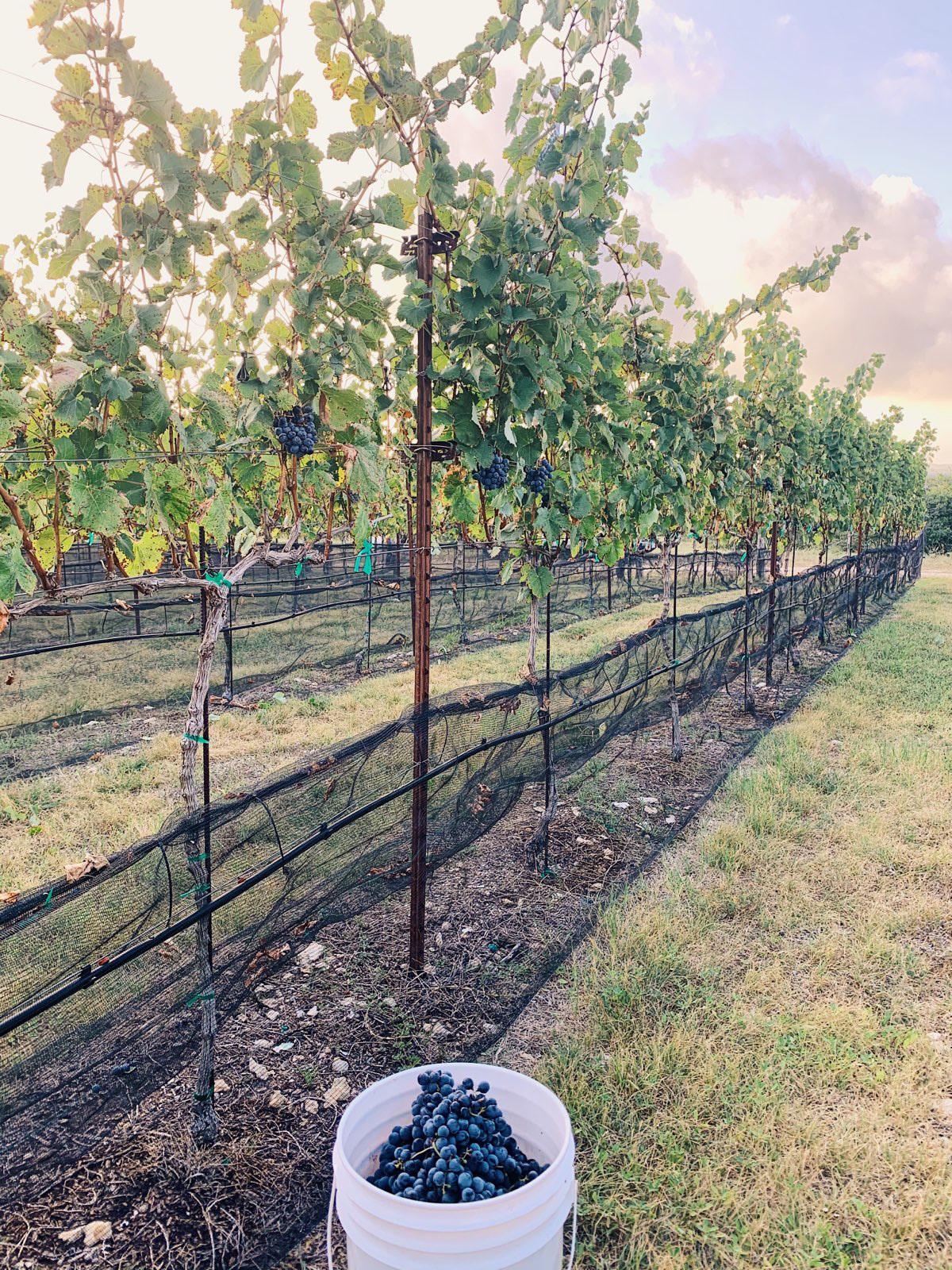

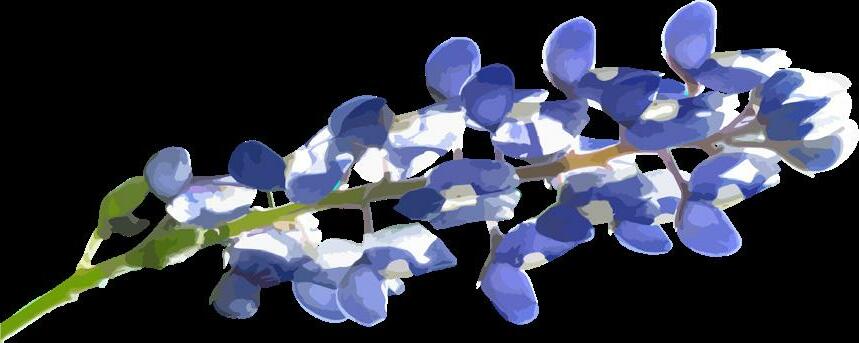
With all of this combined, it was a hard, yet gratifying job she enjoyed very much.
“Farming is elemental,” Reslewic says.
In the editors opinion this is the best list to consider before going on a camping trip
By Boone LynchBring shelter sleeping wet or cold is not fun be smart bring a tarp
Pack suffecient food and water you can survive without your phone but the basic supplies are your priority
Always, if tent camping raise food off ground to at least 6 feet and have your cooking area 100 yards from tent.
Research the area before arriving know what kind of terrain, animals and weather you will encounter
Pack backups for most things like batterys and other amenities you never know when you might drop or break your supplies.

